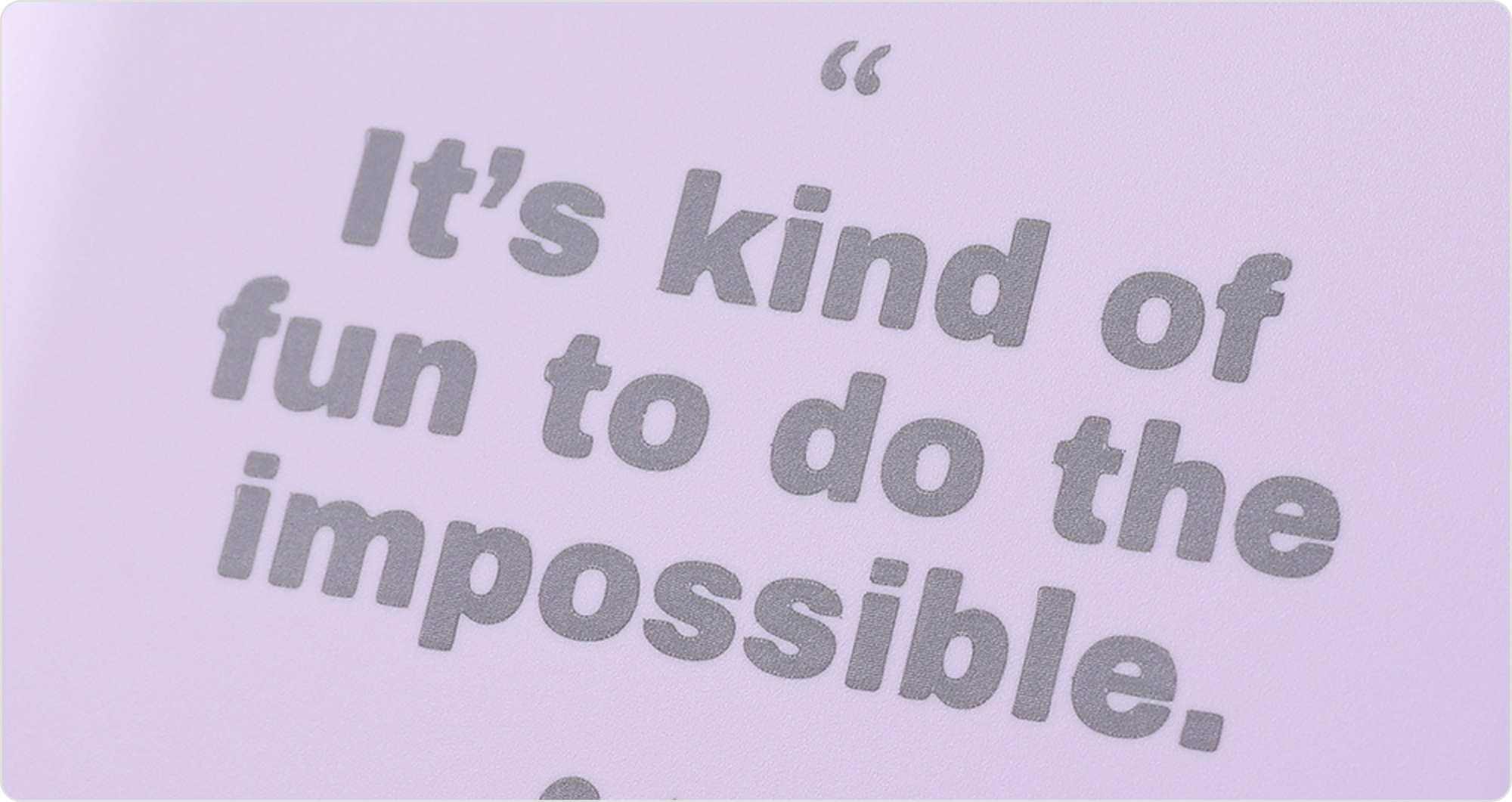Laser marking

Laser marking is a popular technique for creating detailed, permanent designs on a wide range of materials.
From sleek metal parts to delicate plastic components, this customization method offers excellent precision and versatility.
But what sets laser marking apart from other customization techniques, and how can you use it for your own projects?
Read on to answer those questions and explore this technique’s unique advantages and drawbacks.
What is laser marking?
Laser marking uses a focused laser beam to create permanent, high-contrast marks on the surface of a material.
Unlike laser engraving, which involves cutting deep into the material, laser marking only affects the surface, resulting in a smooth, precise etching.
Laser marking instead works by directing a concentrated laser beam onto the material's surface, resulting in a permanent mark that can appear as a change in color, a slight indentation, or even a raised surface.
Laser marking vs. laser engraving: What's the difference?
While laser marking and laser engraving are often used interchangeably, they aren’t the same.
Laser marking creates a surface-level change in the material, while laser engraving cuts deeper into the surface, creating a more pronounced, tactile effect.
Broadly speaking, laser marking is ideal for creating fine details, text, and intricate patterns, as it maintains a smooth surface finish.
On the other hand, laser engraving is better suited for creating deeper, more noticeable designs with a raised or recessed texture.
How does laser marking work?
The laser marking process involves several key steps:
- Creating a digital design file: The first step is to create a digital file of your desired design using specialized software.
- Loading the design into the laser marking machine's software: Once your design is ready, it’s loaded into the software that controls the laser marking machine.
- Placing the material into the machine: The material to be marked is placed into the laser marking machine, ensuring it’s properly aligned and secured.
- Focusing the laser beam onto the material's surface: The laser beam is focused onto the material's surface, ready to begin the marking process.
- Etching the design onto the material: As the laser moves across the surface, it creates a permanent mark in the shape of your design.
It’s a very quick process. Laser marking machines can create complex designs in a matter of seconds – ideal for high-volume production runs.
Pros and cons of laser marking
Laser marking brings several compelling benefits to the table:
- Precision: Laser marking can create incredibly detailed designs with sharp, crisp lines and edges.
- Durability: The resulting designs are permanent and resistant to wear, abrasion, and fading.
- Versatility: It works on a wide range of materials, including metals, plastics, glass, and ceramics.
- Speed: Laser marking machines can create designs quickly and efficiently, making them suitable for high-volume production.
However, there are a few limitations to keep in mind:
- Limited color options: Laser marking typically produces monochromatic designs, although some materials may experience a color change when marked.
- Initial investment: Laser marking machines can be expensive and complex to operate and maintain.
What kind of designs work best for laser marking?
Laser marking excels at creating designs that feature:
- Small, complex details and fine lines
- Small text, serial numbers, and barcodes
- QR codes and data matrix codes
- Logos and branding elements
As we can see, this technique suits compact, detailed designs with thin lines and lettering.
What products are most suitable for laser marking?
Laser marking can be used on a wide range of materials and products, including:
- Metal objects or items with metal components
- Some plastic items, such as electronic devices and appliances
- Glass and ceramic products
When selecting a material for your project, consider factors such as the material's composition, surface finish, and heat sensitivity.
Design your products with laser marking
Laser marking is a powerful, versatile tool for creating precise, permanent designs on a wide range of materials. It’s quick, adaptable, and accurate.
Ready to take your products to the next level with laser marking? Browse our selection of customizable products to kickstart your project today!